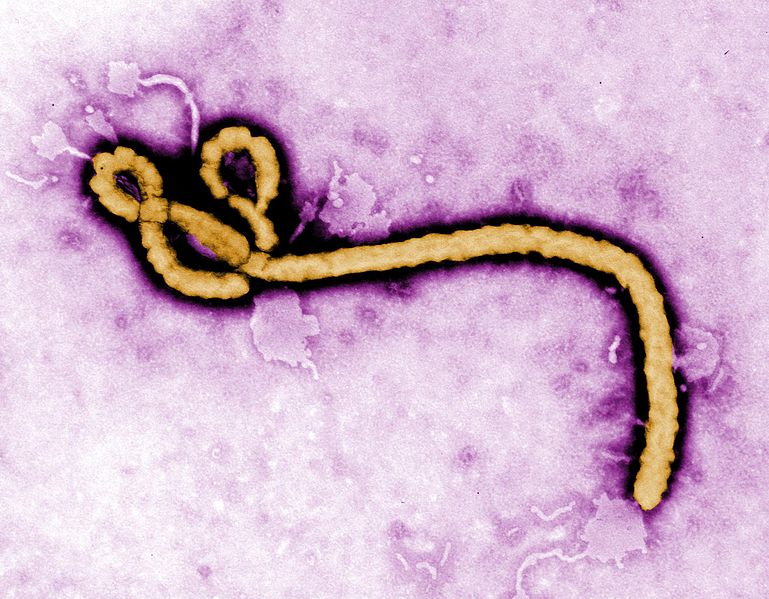
Actions Requested
- Be aware of an ongoing outbreak of Ebola Virus Disease (EVD, Sudan ebolavirus) in Uganda since September 2022. As of October 24, 2022, the Uganda Ministry of Health reported 95 confirmed cases in eight districts in Uganda, including the capital city.
- Counsel patients planning travel to Uganda about EVD and health protection measures.
- Be familiar with early signs and symptoms of EVD, which typically start 2 to 21 days following contact with an EVD case (average of 4-17 days). These include:
- Fatigue, fever, severe headache, muscle and joint pain
- Progression to diarrhea, vomiting, abdominal pain, and unexplained bruising and bleeding
- Obtain a thorough travel history at time of presentation for all patients with symptoms compatible with EVD for the 21 days preceding illness. Include specific locations, reason for travel, activities during travel (including attendance of funerals or caring for ill people), and whether they had contact with anyone diagnosed with Ebola or with symptoms consistent with Ebola. As of October 24, 2022, Ebola virus disease has been reported in eight districts in Uganda: Mubende, Bunyangabu, Kassanda, Kagadi, Kyegegwa, Mityana, Wakiso, and the capital city, Kampala; please check the CDC situation report for most recent information.
- Consider EVD in patients with compatible signs and symptoms AND possible EVD exposure within 21 days prior to sign or symptom onset. Ebola virus is spread through direct contact with:
- Blood or body fluids (urine, saliva, sweat, feces, vomit, breast milk, amniotic fluid, and semen)
- Objects (clothes, bedding, needles, and medical equipment) contaminated with body fluids from a person who is sick with or has died from EVD
- Semen from a man who recovered from EVD (through oral, vaginal or anal sex). There is no evidence the virus can be spread through sex or other contact with vaginal fluids from a woman who has recovered from EVD.
- Infected fruit bats or nonhuman primates
- Isolate all suspected EVD cases and report suspected cases immediately to Kitsap Public Health District at (360) 728-2235.
- Collect blood samples from patient suspected of EVD. Virus is usually detectable by RT-PCR from 3-10 days after symptom onset. A negative result from a specimen collected <72 hours following symptom onset does not rule out Ebola virus infection.
- Collect 2 specimens of whole blood with EDTA in plastic containers.
- For adults, collect minimum 4mL.
- For pediatric patients, collect minimum 1mL.
- Do not separate or remove serum or plasma from primary collection container
- Call Public Health at (360) 728-2235 for testing approval.
- Route specimens to WA Public Health Laboratories.
- Packing and shipping should be done in consultation with Public Health and adhere to guidelines for transporting Category A infectious substances.
- WA Public Health Laboratories will automatically also test specimens for Crimean-Congo hemorrhagic fever and malaria.
- Collect 2 specimens of whole blood with EDTA in plastic containers.
- Treatment with aggressive supportive care can improve patient chance of survival. Currently there are no FDA-approved vaccines or therapeutics for Sudan ebolavirus.
- Maintain hydration through oral or intravenous fluids.
- Use medication to support blood pressure, reduce vomiting and diarrhea, and to manage fever and pain.
- Treatment of secondary infections and pre-existing conditions.
- Review healthcare facility infection prevention and control protocols to identify and manage patients with possible EVD.
- Document a thorough travel history for all patients to identify diseases like EVD that need specific infection control precautions and/or treatment.
- Evaluate patients who have consistent signs and symptoms AND risk factors for EVD.
- Additionally consider common diagnoses which may present similarly, including malaria, dengue, influenza, COVID-19, and other hemorrhagic fevers.
- Identify patients with fever and other signs and symptoms of infection that might warrant isolation pending further medical evaluation.
- Place suspect EVD patients in a private room (with the door closed).
- Ensure recommended PPE is worn when evaluating and caring for a person under investigation for EVD.
- Where possible, use dedicated (and disposable) medical equipment, limiting the use of needles and other sharps.
- Procedures that can increase environmental contamination with infectious material or create aerosols should be minimized.
- Post contact information for infection control personnel and the local public health jurisdiction in highly visible locations for rapid reporting of EVD.
Background
On September 20, 2022, the Ugandan Ministry of Health declared an outbreak of Ebola Virus Disease (EVD) caused by Sudan virus (species Sudan ebolavirus) in Mubende District in Central Uganda. (This is a different species than the pathogen responsible for the 2014-15 Ebola outbreak in West Africa.) The first confirmed case of EVD was a 25-year-old man who lived in Mubende District and quickly identified as a suspect case of viral hemorrhagic fever (VHF) and isolated in the Mubende Regional Referral Hospital. Blood collected from this patient tested positive for Sudan virus by real-time reverse transcription polymerase chain reaction (rRT-PCR) on September 19, 2022, at the Uganda Virus Research Institute (UVRI). The patient died the same day, and a supervised burial was performed by trained staff wearing proper personal protective equipment (PPE). Further investigation into this case revealed a cluster of unexplained deaths occurring in the community during the previous month. As of October 24, 2022, a total of 95 confirmed cases, and 28 confirmed deaths EVD have been identified in Uganda. Three patients with similar presentations who were investigated as part of this outbreak were determined to have Crimean-Congo hemorrhagic fever, which is also known to be circulating in this region. This is the fifth outbreak of EVD caused by Sudan virus in Uganda since 2000. The current outbreak is in the same area as Uganda’s most recent EVD outbreak caused by Sudan virus, which occurred in 2012. During the 2012 outbreak, limited secondary transmission was reported, and the outbreak was effectively contained.
As of October 25, 2022: No suspected, probable, or confirmed EVD cases related to this outbreak have yet been reported in the United States.
Resources
- CDC Health Alert Network Health Advisory – Outbreak of Ebola virus disease in Central Uganda
- Ebola-associated Waste Management
- CDC COCA Call 10/12/2022 – Update on 2022 Ebola Outbreak in Uganda
- Infection Prevention and Control Recommendations for Hospitalized Patients Under Investigation (PUIs) for Ebola Virus Disease (EVD) in U.S. Hospitals
- Guidance on Personal Protective Equipment (PPE) | Personal Protective Equipment (PPE) | Public Health Planners | Ebola (Ebola Virus Disease) | CDC
